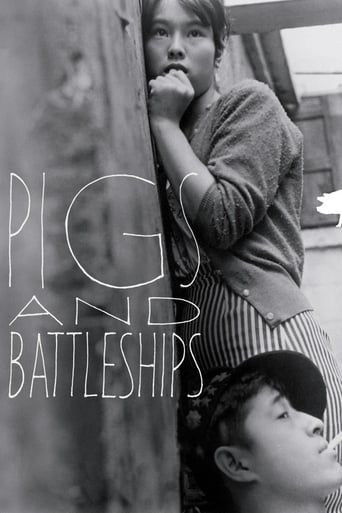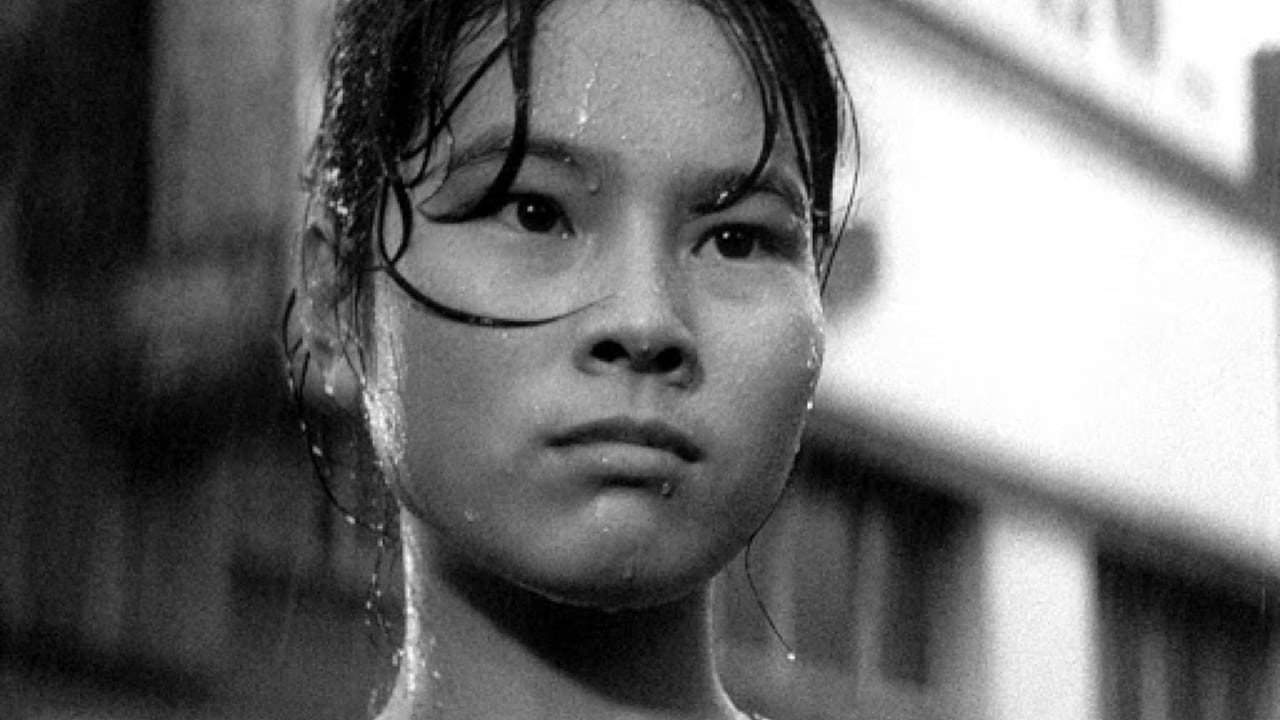christopher-underwood
Rampaging yakuza of the juvenile type, bad losers at mahjong, lots of screaming, running about and overacting. Sound familiar? I'm afraid so and it was only about halfway through I realised this was probably intended as a comedy. To be fair to director Shohei Imamura this is a 1961 film and was at the forefront of the Japanese 'New Wave'. Prior to this, running and jumping about film, most of Japanese cinema had been much more mannered, serene and dedicated to promoting the beauty and art of the Japanese way of life. Here at least an angry man is putting his foot down and having a go at the US occupation forces and their parasitic brethren, the aforementioned, yakuza. Not an easy watch, not least because everyone (excepting one) is horrible, and the comedic moments are just not funny any more, even if they seemed so to a far eastern cinemagoer almost 60 years ago.
WILLIAM FLANIGAN
Viewed on DVD. Excellent restoration. Director Shohei Imamura has laid a very large egg with this amateurish, improvised, and not engaging movie. (I'm surprised the studio risked damage to its reputation by even allowing its release to art-house circuits! More about this later.) The plot deals with the lowest of the low level of mob gang members towards the end of the Japanese occupation in the late 1950's. The direction and acting are so bad that it, well, gives the mob a bad name. (You'll see better productions mounted in high-school plays.) Then there are the subtitles. What a mess. They are so amateurishly long and frequent that the viewer has two basic options: (1) focus on the titles and fore go the visuals and most of the dialog; or (2) turn off the subtitles and take your chances with the local (mostly Yokosuka) slang and dialects. (Of course, there is a third alternative: watch the film both ways--recommend only for those with strong constitutions!) Interiors meticulously recreate a portion of the local red-light district. But the action is clearly staged and phony. Same for the real exteriors where the action looks unreal even though the sets are not. Cinematography and lighting (wide-screen, black and white) are excellent. Music seems out of place and mercifully limited mostly to the opening/closing credits. Costumes often look like they are every-day clothes that belong to the actors. Now back to the film's title and its impact on the releasing studio's reputation. The battleships are American and the pigs (the four-legged varieties) are Japanese. But does the Director also have a culturally inappropriate and insulting metaphor in mind? The film is ambiguously anti-American. But seems clearly anti-Japanese. Skip this turkey. WILLIAM FLANIGAN, PhD.
FilmCriticLalitRao
In any given economic scenario, it is easy to see how poor people become more poor while their rich counterparts are able to accumulate more wealth. This is depicted in 'Pigs and Battleships' through the sufferings experienced by a young Japanese boy who asks his girl friend to stop the sale of her body. Foreign occupation and rampant corruption are responsible for the decline in moral as well as social values of an occupied land. This idea has found complete favor in this film. A filmmaker cannot turn a blind eye at all to ills of the society in which he or she is living. After the making of Japanese film 'Pigs and Battleships', nobody can dare to accuse iconoclast Japanese director late Shohei Imamura of trying to denigrate Japan's image in the eyes of foreign powers. Director Imamura has always made it a point to have an honest yet frank portrayal of Japan's undesirable people in his films. By remaining honest to himself as well as his art, director Imamura has always portrayed what he has witnessed with his own eyes.
mevmijaumau
It's no wonder why Shohei Imamura's films are often considered a contrast to his mentor Yasujiro Ozu's films. Ozu's films are static, simple, about the polite middle class families with fairly uneventful lives. Imamura, on the other hand, was more like an amateur anthropologist seeking beauty or poking fun at a chaotic society getting caught up in corruption, nationalism, swindles of all kinds and its international relations.Pigs and Battleships is a turning point in Imamura's career - from now on, his films all have that characteristic style of his. Fast pace and constant motion, characters living on the boundaries of society, a satirical view on the society itself, and many interesting camera techniques which make the movie feel alive and pulsing, unlike in traditional Japanese cinema up to that point.In this movie, Imamura satirizes everyone and everything, from American soldiers, who are portrayed as dumb pleasure-seekers at the cost of everything, to Japanese (anti)nationalists, yakuzas and other opportunistic criminals, to the scheming Chinese gangsters who then in turn get swindled by a Hawaiian-Japanese fellow. This entire multi- cultural chaotic mess cannot be expressed more beautifully, and gives birth to one of the stranger insults I've heard in a movie ("International whore!").Imamura's film, like always, doesn't follow a strict plot line, but instead focuses on as many characters as you can shove into the film's runtime. From the moral dilemmas of the protagonist's girlfriend, who longs for a better life in Kawasaki to the yakuza boss succumbing to illness. There is so much to follow and makes the movie constantly fresh. In a lesser filmmaker's hands, this kind of free-for-all, gambit pileup plot setup would be annoying and unfollowable, but Imamura's pacing salvages the entire story and holds it together, climaxing in the best scene I've ever seen that contains pigs and machine guns.Another great thing about the film is how it's both comical and tragical in turns, but never does anything feel forced. During tragic scenes, there's never a cheap, tear-jerking musical accompaniment and pathetic lines of dialogue, same as how the funny scenes don't ever feel intrusive, they just effortlessly find their way into the movie's fabric. Every quality I've mentioned above is pretty much why Imamura is one of the greatest New Wave directors.


 AD
AD


